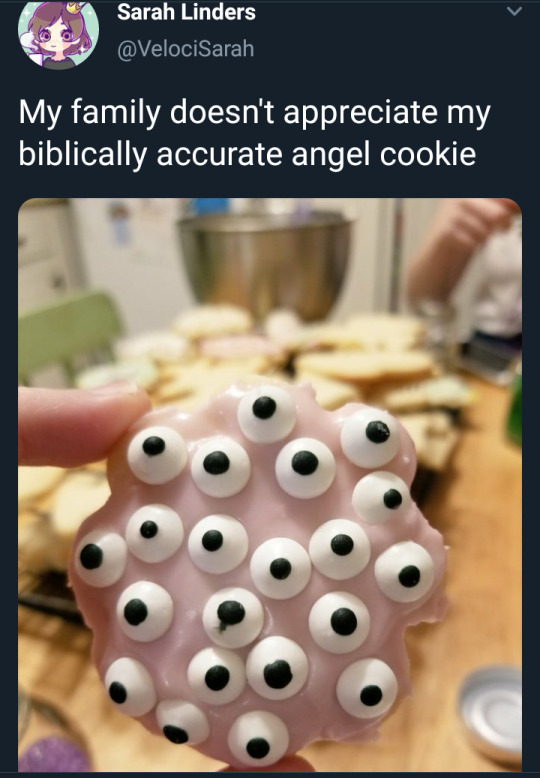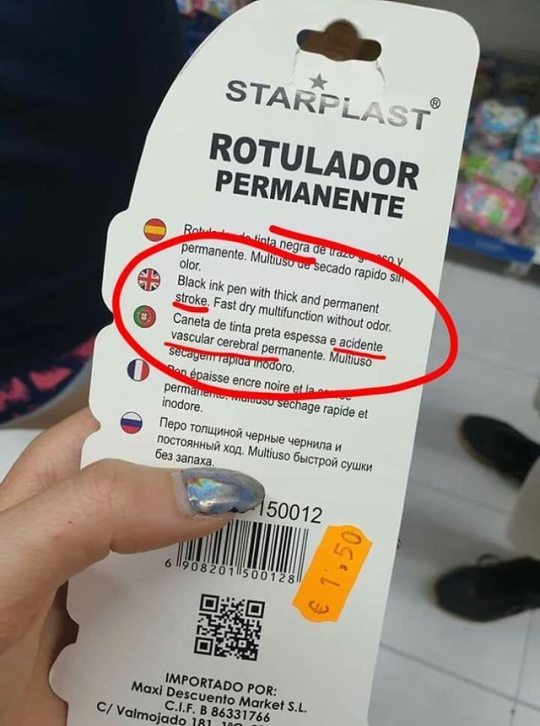Note
Bees!!! They’re my favourite animal!

I have told them. They are pleased.
17 notes
·
View notes
Text
theory of @thebibliosphere confirmed. @butlerbookbinding you ALWAYS tag me in Scottish stuff and are therefore utterly predictable. 😜

942 notes
·
View notes
Photo

Next in the older work... I had posted a couple progress shots of this one, which was actually a gift rather than an order, to celebrate the birth of my friend's beautiful baby. Here's the finished book! A flexible binding (tightback) with hand dyed galaxy sky and silhouetted forest, though the tree details get a little lost in this photo. https://www.instagram.com/p/B9MnrR7JLG6/?igshid=153pjamn3lgm5
1 note
·
View note
Photo

I have been terrible at updating my social media this last year so I'll be uploading some of my work over the next few weeks to make up for it. Starting with this delightful custom order from September. A bradel binding for a wedding guest book, in green and purple metallic bookcloth with a hand drawn illustration of an owl and a wookie inset into the cover! 😂😍 https://www.instagram.com/p/B811GKJpVtO/?igshid=pdyf2qfzrceg
6 notes
·
View notes
Photo

https://www.facebook.com/dailygael/posts/2152578708372554

I think one is enough
511 notes
·
View notes
Photo
But.. if it's inverted... that would make it..


I think one is enough
511 notes
·
View notes
Photo

Bindery cat in training! This is Sabetha, apprentice in chaos and cuddles. #bindery #kitten #lovesyouall https://www.instagram.com/p/Bz22M-8Hjma/?igshid=1myyhq4q10ujh
24 notes
·
View notes
Text

This is a PSA on BEE HOTELS!!!!
Gardener's World did the awful one used as the image for this post, so please sit tight.
You want solitary, cavity nesting bees in your garden? Cool. These will be of a few different genera. The most common that you get in regular, store bought bee hotels are Osmia and Megachile, but people also get Heriades, Anthidium and Hylaeus. You also can get a lot of solitary wasps which are
! ! ! A W E S O M E ! ! !
If you're buying one in a store, please read on! For instructions on how to make one please hold on while I try find my old hard drive :)
To select one:
Avoid bamboo (multitude of problems with it inc splitting and shortness due to the cells in it)
Make sure there's a good distance between the holes (3/4 inch at least)
Make sure there's no splinters on the outside, these will rip newly emerging bee wings and potentially the more worn out momma bees
No metal wire on the outside unless you live in an area with woodpeckers. Again, bee wings can get caught and tear on the wire.
NO. I REPEAT. NO PINECONES!!! They flow up in winter and squish whatever is inside.
Closed ends to prevent parasites sneaking in the back & to stop baby bees falling out the wrong end (though the female bee will try hr hardest to stop this, they are more exposed)
At least 4 inch deep holes which are 10mm across or less. 12mm can work for some Megachile & Anthidium
A range of holes sizes is good for multiple species but can promote diseases being passed between different species, so your choice what you choose to risk.
Make sure it's fairly waterproof, especially if you're somewhere wet.
Don't use treated wood as the treatment can include insecticides.
Mounting your bee hotel:
Please FIRMLY ATTACH your bee hotel to something at about head height (prevents ants). If it sways, say good bye to the baby bees.
Please attach facing south-east to south (so the bees can warm up and dry off when they first emerge)
Cleaning:
Please replace your bee hotel every yearto 2 years. Mite build up is a thing and it is not good!! If you want to reuse it, you can bleach it to prevent disease spreading (1 part bleach to 3 parts water) and clean out the holes with pipe cleaners if you must to get rid of mites that are in a weird form of "hibernation" (it's not quite called that but for simplicity's sake..!).
That's it. Please be well informed on your purchases. There are good reusable bee hotels out there which come apart so you can clean and inspect the cells.
Further work can be done by removing cells for over wintering, leaving them in a dry cool place (they need it to drop to ~4 degree Celsius iirc) and clean your bee hotel out then. Release as they emerge or leave them in an emergence box outside that is safe from birds, badgers and rodents (dark box with a small emergence hole).
I personally recommend the Nurturing Nature bee hotels as they are well researched!
This is written from a UK bee perspective I'm not 100% sure on American ones, but there's lots of info out there e.g. Managing Alternative Pollinators handbook by the Xerces society.
33 notes
·
View notes
Text
Been failing to post my bookbinding work here, lately..
in the meantime, here’s a picture from Friends of Embry Hills Library’s facebook page for no reason whatsoever:

[A library display stand with several book stands but no books, topped with a sign that reads. “Please be patient. Our display on procrastination will be up soon.”] source: https://www.facebook.com/friendsofembryhills/photos/a.579308665428920/2827051580654606
13 notes
·
View notes
Text
Knotting
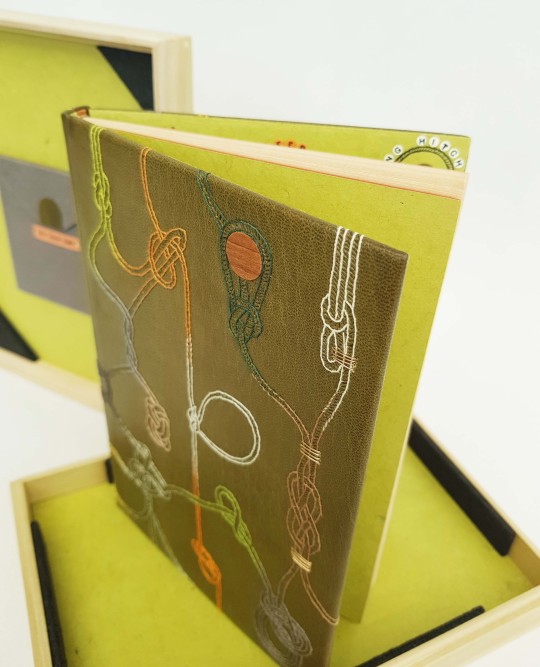
This little binding was made for an exhibition being put on by Designer Bookbinders as part of London Craft Week at Maggs Bros. Ltd (48 Bedford Square, London, WC1B 3DR) between the 8th and 12th May 2019. Shown in the 'modern department’ of the Bedford Square store with other modern bindings surrounding the room, it was in very good company!
This is a binding I had had on the go for a very long while, it is rare I get to do speculative pieces so it was a pleasure to work on something a little different. A relatively small book measuring 186mm x 127mm x 15mm with a series of instructional knots making up the contents.
“Gilcraft” was the pen name for Francis Gidney who was an early leader of the Scouting movement in the UK. He used this name when writing articles and also in several instructional books and booklets for both adult Scouters and boys, such as this publication of “Knotting”. Published in 1942 by Morrison and Gibb Ltd, London and Edinburgh.
The original was in a soft covered in green cloth. The book was pulled and re-sewn onto three tapes. It then went through the forwarding process.
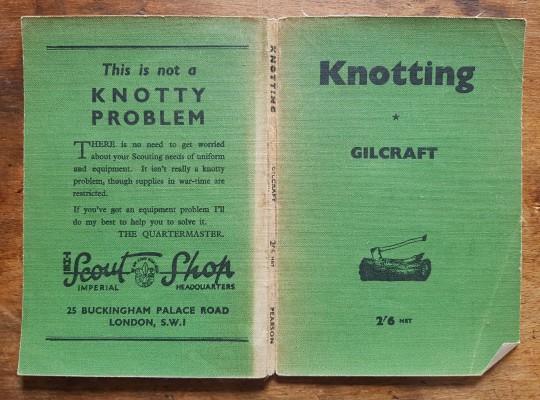
Keep reading
31 notes
·
View notes
Text
Bridges on The Backs
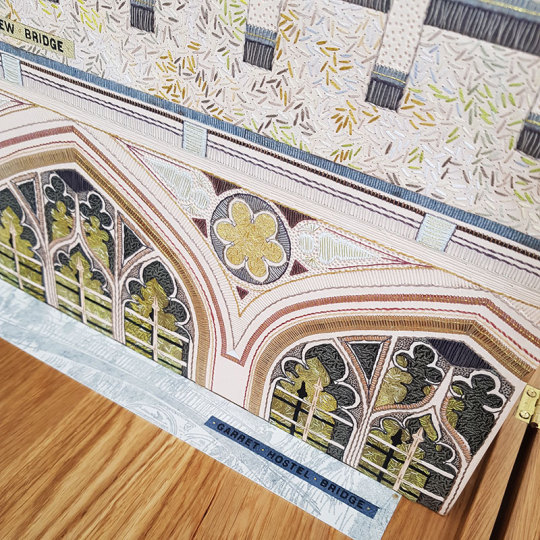
Not only do you have to be a bookbinder when you are a bookbinder, but also a graphic designer, craftsperson, leatherworker, printmaker, carpenter, jeweller, photographer and of course a miracle-maker!! My latest commission is finished and one more book has left the studio and is now happily with it’s new owner. Fortunately I didn’t have to trust the postal service for this one and was able to hand deliver it.
“Bridges on the Backs” was completed at the end of March. The book was printed in 1961 and formed part of a series of more than 34 books that were published by Brooke Crutchley at The University of Cambridge in between 1930 and 1958 as part of “A Printer’s Christmas Books” - the printing of these was the University Printer’s continued custom of giving a book to friends of the press at Christmas. The series was started by Walter Lewis and Stanley Morison in 1930. Brooke Crutchley was the University printer at Cambridge and oversaw the production of the Christmas Book series from its inception 1930 until its discontinuation in 1973. He gave a talk at St. Bride Printing Library in December 1975 at the opening of an exhibition of the Christmas books which ran from 10 December 1975 to 30 January 1976.
The book is a first edition, one of 500 copies printed in Monotype Times Wide on Spicer’s cartridge paper. Illustrated with 9 drawings, touched with colour, by David Gentleman, with another on the front endpaper and title-page. The original binding was a green canvas portfolio binding, lettered in gilt.
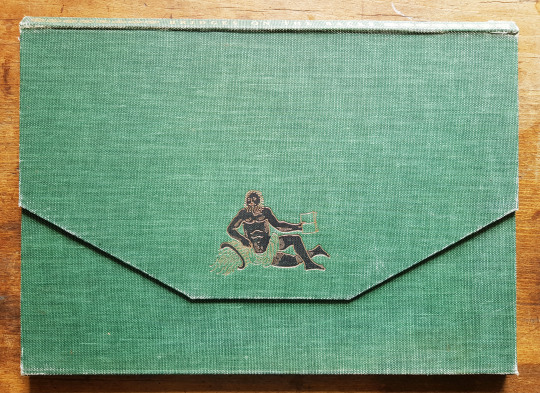
Keep reading
17 notes
·
View notes
Photo

Twitter account: Quakers in Britain “Quaker meeting... it’s very intense. It’s very quiet. It’s very... very... erotic.” - @Fleabag Quite the endorsement.... Find your nearest meeting today👇#fleabag https://www.quaker.org.uk/meetings
10 notes
·
View notes
Photo
<3







Soft Sculptures
Beetlegirl Design on Etsy
See our #Etsy or #Soft Sculpture tags
2K notes
·
View notes
